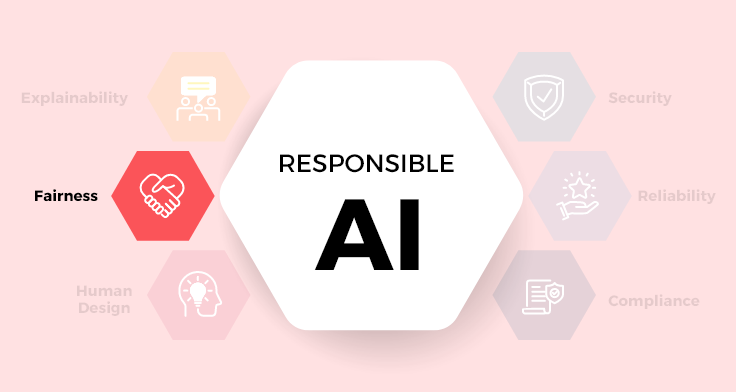In the rapidly-evolving field of artificial intelligence (AI), we are presented with a variety of promising possibilities and daunting challenges alike. As we herald AI’s potential to transform society, it’s crucial that we address one key issue integral to responsible and ethically designed AI: fairness.
Identifying Bias in Training and Application of AI Recommendations
AI systems learn from data and, in doing so, they often internalize the biases contained within that data. Consequently, such biases can pervasively infiltrate the system’s recommendations and output, making it important to inspect and recognize these biases during the system’s training phase.
For example, consider an AI system designed to predict job suitability. If its training data consists predominantly of CVs from men, the system risks overlooking the competencies of women or non-binary individuals. Here, representation bias distorts the AI’s understanding of ‘job suitability’, leading to skewed and potentially unjust recommendations.
Understanding such injustices requires a measure of statistical literacy, but the broader takeaway transcends mathematics: we must be vigilant against latent prejudices baked into our datasets. Improper understanding and usage of data potentially perpetuate structural inequities, an antithesis to fair and equitable AI practices.
Mitigating Bias and Identifying Residual Risk
Once such biases are identified, the next daunting task is their mitigation. This involves revising the datasets being used, tweaking the mechanisms of the AI system, or adopting novel techniques such as ‘fairness through unawareness’ (where the algorithm is designed oblivious to sensitive attributes), or ‘fairness through accuracy’ (where equal predictive accuracy is maintained for all groups).
Let’s revisit our job recommendation AI. One potential solution is ensuring the training data is balanced regarding gender representation, acknowledging the non-binary candidates as well. Alternatively, the AI could be redesigned to ignore gender information while making its predictions.
Yet even after mitigation strategies are applied, there remains a residual risk. These residual ‘echoes of bias’ are critical, subtle, and often overlooked. There’s no perfect recipe for unbiased AI; all mitigation strategies harbor some risk of passing the remnants of bias into the AI system. Recognizing this residual risk is the crucial first step toward managing it and is key to continually improving our AI systems for fairness.
Advancing Toward Equity
Addressing bias and its residual risk segues to our final consideration: the pursuit of equity. It’s crucial to note that fairness is not synonymous with equity. Fairness seeks to remove biases; equity goes a step further, aiming to correct systemic imbalances.
AI has the potential to advance this goal by giving communities the tools to understand and challenge systemic imbalances. For instance, a transparent AI model that highlights the unequal funding among schools in a district can serve as a powerful tool for demanding educational equity.
However, achieving equity through AI requires us to consider more critical questions. Who is framing the problem? Who is excluded or disadvantaged by the existing system? Addressing these points will enable us to engage AI as an ally in promoting equity while ensuring its use is genuinely fair.
In conclusion, a fairness component is crucial to crafting responsible AI. Identifying and mitigating biases, and understanding residual risks, is integral to this process. However, the pursuit of equity requires us to delve even deeper, asking tough questions and challenging systemic imbalances.
The nascent field of AI Ethics is defining parameters to ensure that AI models are just and equitable. We, as a community of data enthusiasts and professionals, have a critical role in advancing this discourse, in the spirit of asking: how can we break algorithmic norms to shape a more equitable future?
To explore the other parts in this series, click here.
Recent Blogs

Bots to Brains: How Agentic AI is Changing the Game
July 8, 2025

The Future of Supply Chains Is AI-Driven—Is Your Business Ready to Embrace the Change?
July 2, 2025

What Retail Media Can Learn from Instacart’s AI Strategy
June 24, 2025

Beyond Chatbots: How Agentic AI Is Automating High-Stakes Business Decisions
June 11, 2025


